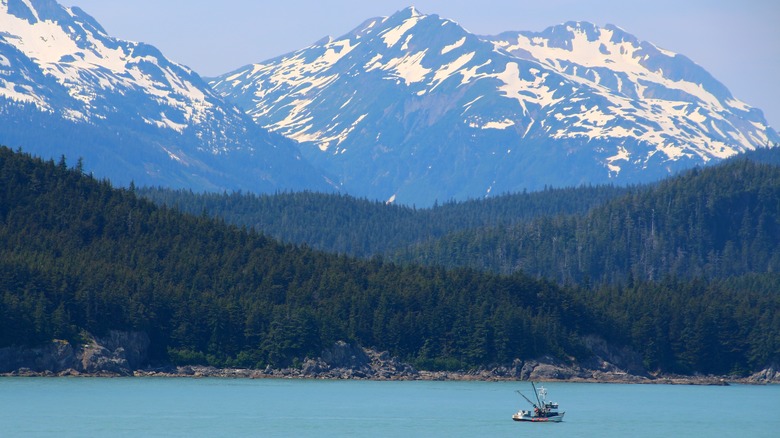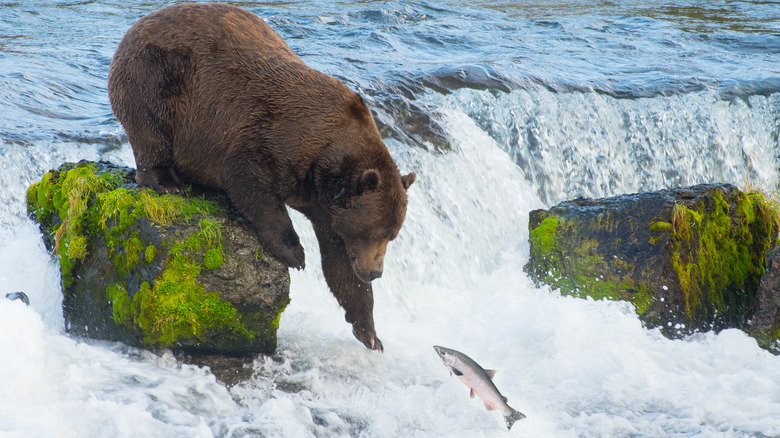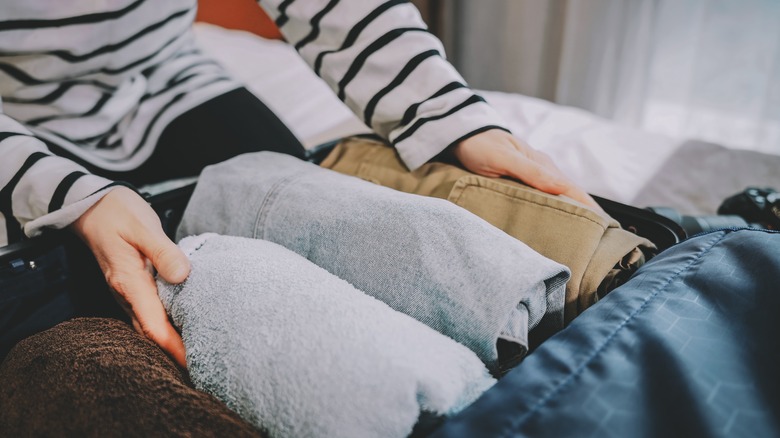Alaska's 'Emerald Isle' Is Home To Spectacular Wildlife And Captivating Nature Views
Alaska is no stranger to jaw-dropping scenery. But southwest of Anchorage in the Gulf of Alaska lies one of the state's lesser-known gems: Kodiak Island. Lush and green for most of the year, Kodiak has earned its nickname, "the Emerald Isle." Thanks to its temperate climate — milder than much of Alaska — and constant marine moisture, the hills stay mossy, spruce trees thrive, and wildflowers blanket the meadows each summer. Frequent rain, dramatic skies, and bursts of misty sunshine lighting up the landscape.
Covering nearly 3,600 square miles, it is the second-largest island in the United States after Hawaii's Big Island, and home to approximately 13,500 people across the Kodiak Archipelago — most of these people live in the city of Kodiak. Almost two-thirds of the island forms part of the Kodiak National Wildlife Refuge, meaning its valleys, rivers, and alpine ridges remain mostly untouched — perfect for travelers hoping to experience raw Alaskan beauty. Even some of America's most beautiful state and national parks don't get half this green.
Though remote, Kodiak is a hub of activity — not just for wildlife. It hosts the largest U.S. Coast Guard base in the country. The island also supports National Oceanic and Atmospheric Administration (NOAA) scientists, commercial fishers, cannery workers, biologists, and families who come and go with seasonal work. This constant movement creates a community that's not just used to newcomers, but welcoming towards them. If you're seeking an Alaskan escape that still feels like a hidden corner of the world, Kodiak Island offers endless adventure.
How to make the most of your time on Kodiak Island
You can't talk about the island without mentioning its most famous resident — the Kodiak brown bear, the largest brown bear subspecies in the world. These 1,500-pound giants roam freely through the Kodiak National Wildlife Refuge, which spans nearly 2 million acres. Guided bear-viewing tours offer safe, respectful chances to see them in action — especially in the summer months when salmon fill the rivers. To learn more about the Island's Wildlife, visit the Kodiak National Wildlife Refuge Visitor Center in town — it's small, easy to explore, and full of interesting exhibits.
Seeing a Kodiak brown bear is unforgettable — but there's more waiting for you on the island. Visit the cliffside Fort Abercrombie State Historical Park, featuring World War II relics, hiking trails, tidepooling, and viewpoints for whale-watching. It captures both the scenic and historical sides of the island. Feel like stretching your legs? Hike up Pillar Mountain for breathtaking views of the ocean and town below. Prefer quiet exploration? Charter a boat for deep-sea fishing, or rent a kayak and paddle along the coastline where puffins nest and otters float by. Fossil Beach, at the southern tip of the road system, offers a windswept, otherworldly stretch of sand — perfect for beachcombing, picnicking, or just listening to the surf.
The Kodiak Fisheries Research Center is a must-see spot and takes just 45 to 75 minutes to explore. Entry is free, and visits are available during regular business hours — Monday to Friday, 8:00 a.m. to 4:30 p.m., though advanced booking is advised. It's a great place to see how marine life connects to everyday life on the island.
Planning your Kodiak Island trip
Getting to Kodiak Island is relatively easy. Most visitors fly into Ted Stevens Anchorage International Airport — Alaska's busiest — then take another hour flight with Alaska Airlines or Ravn Alaska Air to reach Kodiak's local airport. These flights run several times a day and are the fastest and most affordable way to reach the island. Ferries via the Alaska Marine Highway also connect Kodiak to Homer, though the trip takes around 10 hours. It's a scenic ride with beautiful views of coastal landscapes and wildlife, but schedules are limited. Accommodation-wise, options range from downtown Kodiak hotels to more remote stays like Shelikof Lodge and Goldilocks Bed and Breakfast. Rates typically fall between $160 and $300 per night, depending on the season and room type.
You should consider visiting Alaska during high tourist season — which falls between mid-June and August — when you'll get the most daylight and better shot at decent weather. Still, there's no guaranteed "dry" season, so pack a rain jacket, waterproof hiking boots, and layers you can add or remove easily. A reusable water bottle, bear spray, and even binoculars are great to have — you never know what you'll spot. Mosquitoes aren't too bad in Alaska, but bring a good bug spray if you're visiting in June or July when they're most active. For more help planning your trip, check out this DIY Alaska vacation guide.


